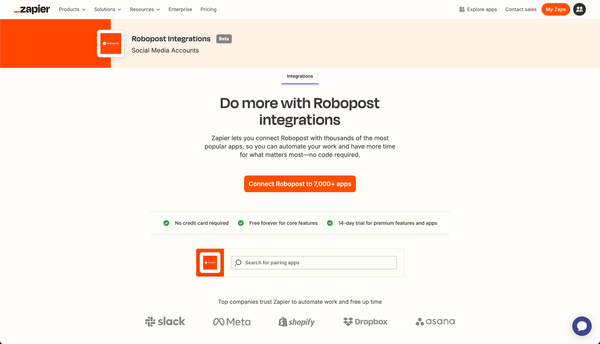Storytelling on Social Media: How to Captivate Your Audience
Discover how to engage and captivate your audience with effective storytelling techniques on social media platforms.

In a time when there's too much information, storytelling is like a guiding light. It helps brands stand out on social media by grabbing people's attention. This article talks about how to tell stories well on different platforms, focusing on visual storytelling, genuine interactions, and using content from users. When brands do this right, they create stronger bonds with their audience, making their message more meaningful.
Key Takeaways
- Employ visual storytelling on platforms like Instagram and Pinterest to effectively engage and resonate with your audience.
- Foster authenticity and trust by crafting narratives that are true to your brand and relatable to your audience.
- Encourage audience participation and content creation through strategic hashtags and interactive storytelling techniques.
- Apply the 5 P's of social media storytelling—People, Purpose, Plot, Place, and Pace—to structure and deliver compelling stories.
The Art of Visual Storytelling on Social Media

Choosing the Right Platforms for Your Visual Narrative
Choosing the right social media platform is important for telling stories with visuals. Platforms like Instagram and Pinterest are good examples because they let you share a series of pictures to tell a story or show different parts of a bigger story. Instagram also has features like captions, polls, and quizzes that can get people more involved.
Different platforms are good for different kinds of content. For example, the pictures you share on Instagram might be different from what you share on LinkedIn. It's important to make sure your pictures and videos fit each platform so more people see and like them. Here's a quick guide to help you pick the right platform for your content:
- Instagram: Use it for nice pictures and short videos; use stories and posts to tell a story.
- Facebook: Good for longer videos and picture collections; lots of different people use it.
- X(Formerly Twitter): Good for quick updates and teasers; add pictures to your tweets.
- Pinterest: Great for pretty pictures and how-to guides; also good for mood boards.
- TikTok: Good for showing off creativity with fast videos, drawings, or stories.
Engaging Your Audience with Authentic Narratives

Understanding Your Audience for Tailored Stories
To really connect with your audience through stories, you need to know them well. That means understanding what they like, what challenges they face, and what they care about. When your stories match their experiences and interests, it creates a strong connection.
Being real in storytelling isn't just about being honest; it's about being open. Sharing the human side of your brand, both the good and the bad, makes your story relatable and trustworthy. This honesty is key for engaging your audience, as it helps them see themselves in your story.
Keep an eye on how well your stories are doing. Pay attention to how engaged your audience is and what they say about your stories. Be ready to change your approach to better connect with your audience and meet your brand's goals.
The Power of Authenticity in Building Trust
Being real is crucial in social media storytelling. When people feel your stories are genuine, they trust your brand more, which helps build strong relationships.
Authentic stories connect with people emotionally and make them feel like they can relate. Here are some tips to keep your stories genuine:
- Be Open: Share real stories about your brand or personal experiences.
- Stay True to Your Style: Keep a consistent tone that reflects your brand's personality.
- Invite Participation: Encourage your audience to share their own stories, adding to the authenticity.
Being genuine is a commitment. Consistent and honest storytelling builds trust and keeps your brand true to its values.
Interactive Storytelling: Polls, Quizzes, and Live Q&A
Interactive storytelling gets people involved instead of just watching, making them active participants in a conversation. Polls and quizzes on platforms like X and Facebook are fun ways for followers to share their thoughts and preferences. This helps the brand learn more about its audience and makes followers feel valued.
Live Q&A sessions, especially on Instagram Live or Facebook Live, add a personal touch to online interactions. They allow followers to talk directly with the brand in real time. This can create a feeling of community among your audience.
Always keep your audience engaged by asking questions and encouraging interaction. This not only keeps them interested but also helps build a loyal community that enjoys your brand's stories.
Leveraging User-Generated Content for Compelling Stories

Encouraging Audience Participation with Hashtags
Hashtags are a great way to connect with your audience and get them involved. When you create a unique hashtag for your brand, it encourages users to share their stories. You can then showcase these stories on your social media, which not only boosts engagement but also gives you lots of content to share.
When picking hashtags, it's important to choose ones that are relevant and trending. It's also a good idea to subtly include hashtags in your posts, so they don't look spammy. Too many hashtags can turn people off.
Look at how successful brands use hashtags and learn from them. Follow their social media, see how they interact with their audience, and adapt their strategies to fit your brand's style and goals.
Curating and Sharing User Stories
Using user-generated content (UGC) is a smart way to tell stories and boost your brand's presence on social media. Choose UGC that fits your brand's values and message.
- Make a special hashtag for your brand to encourage users to share their stories in a way that's easy to track and share.
- Share the best stories on your social media to show authenticity and create a sense of community.
- Keep featuring user stories to keep your content fresh and show appreciation for your audience.
The goal is to create a story that's real and fits your brand. This not only engages your followers but also gives you content for future marketing.
Benefits of UGC in Enhancing Brand Loyalty
User-generated content (UGC) isn't just a trendy term; it's a valuable tool for building brand loyalty. When brands share UGC, they show they value their audience's involvement, which encourages more interaction and content creation.
- UGC acts as proof that people value the brand.
- It gives customers a chance to share their thoughts, making them feel more connected to the brand.
- Sharing UGC can turn customers into brand supporters, spreading the brand's message naturally.
Additionally, UGC can provide valuable insights into what your audience likes. By looking at UGC, brands can adjust their future content to match what customers want, strengthening the relationship.
The 5 P's of Social Media Storytelling

People: Focusing on Characters and Influencers
In social media storytelling, characters and influencers are essential for connecting with the audience. They add a human touch to the story, making it easier to relate to and remember. When choosing people to represent your brand or story, make sure they align with your brand values and can be authentic.
- Choose characters that your audience can relate to.
- Work with influencers who believe in your brand and can connect genuinely with their followers.
- Share real-life stories and testimonials to make your narrative more credible and meaningful.
Purpose: Defining Your Story's Message and Moral
In social media storytelling, the reason behind your story is like a guide for your content. It's the main message you want to share with your audience, whether it's to entertain, educate, or inspire them. Having a clear purpose ensures that your story not only connects with your audience but also matches your brand's values and objectives.
Here are some tips for effectively conveying your story's purpose:
- Clearly explain what you want your story to achieve with your audience.
- Make sure every aspect of your story, including characters and settings, supports the main message.
- Consider how your story's purpose will strengthen loyalty and trust among your followers.
A story that has a clear purpose is more likely to leave a lasting impact and build a community around your brand.
Plot: Structuring Your Narrative for Social Media
In social media, the storyline of your story is like the backbone that guides your audience through the narrative journey. Creating an engaging story arc is important because it captures your audience's attention from the start and keeps them interested, wanting to know what happens next.
Here are some tips to make the most of your social media storytelling:
- Understand your audience so you can tailor the story arc to their interests and needs.
- Create a "long" story that can be split into multiple posts or stories, creating a sense of continuity and anticipation.
- Focus on writing quality content that takes your audience on an emotional journey.
Keep in mind that each social media platform has its strengths. Adapting your content to fit each platform's characteristics maximizes its impact, ensuring that your story not only gets heard but also resonates with your audience.
Place: Matching Your Story to the Right Platform
In social media storytelling, picking the right platform is really important. Each social media site has different features and appeals to specific groups of people, so choosing the right one is key to your story's success.
- Instagram focuses on visuals, so it's great for high-quality photos and short videos.
- Facebook is versatile and supports longer stories and live interactions.
- X is good for quick updates and short storytelling.
- Snapchat and Instagram Stories are best for short-lived content that grabs attention right away.
Knowing what each platform does best and who uses it helps you create content that works. It's not enough to just share the same story everywhere; you should adapt it to fit each platform's style for the best results.
Pace: Keeping Your Content Dynamic and Engaging
In social media, how often you share your stories is just as important as what you share. Keeping your content interesting and interactive is key to keeping your audience engaged and coming back for more. Here are some tips:
- Mix up your content: Use a variety of posts like images, videos, text, and live sessions to appeal to different preferences.
- Time your posts right: Share when your audience is most active to get the most views. Tools like Robopost help you doing so.
- Find the right frequency: Don't post too much or too little; aim for a balance that keeps your audience engaged without overwhelming them.
It's important to adapt your approach as social media changes. Keep up with trends, adjust your content to fit each platform, and regularly check how well your stories are performing. Pay attention to engagement metrics and feedback from your audience, and tweak your strategy to meet your brand's goals.
Conclusion
In today's digital world, where content comes and goes quickly, storytelling on social media is a standout way to truly connect with people. This article has emphasized how storytelling can transform relationships, build trust, and strengthen brand loyalty. By following the five P's of storytelling, using visual content, and interacting with user-generated content, brands can capture their audience's attention and make a lasting impact. Social media storytelling is about more than just sharing information; it's about stirring emotions and creating memorable experiences. As we navigate social media's changing landscape, let's use the timeless power of a great story to stand out and touch our audience's hearts.
